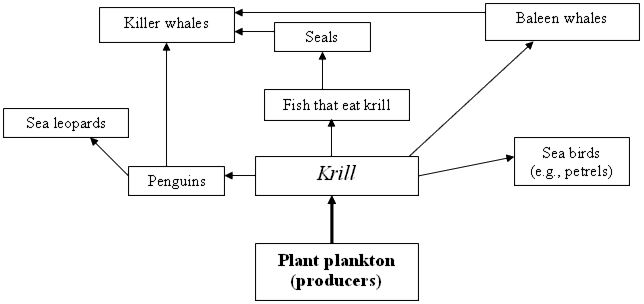Feeding relationships in the Southern Ocean
This task is about reading and interpreting food webs.
There are lots of living things in the cold waters of the Southern Ocean around Antarctica.
Key feeding relationships there are shown in the food web below.

Interpret the food web to answer the following questions:

